If you’ve had a chance to visit the new Machicomoco State Park, then you’ve likely seen the historic Timberneck house near the Interpretive Area. Timberneck was built c. 1793 for the Catlett family, who owned and lived on the property until the early 2000s. Previously the land had been home to the Mann and Page families who had an earlier house nearby, and there is also evidence of a Native American occupation which predates the Mann, Page, or Catlett families’ presence. While we have dedicated volunteers working to restore the house itself, we are also exploring the landscape around the house through archaeology!
We began with a shovel test survey that expanded on our previous work at the current Interpretive Area. The earliest artifacts relate to the Native American occupation of the peninsula, including lithic flakes and pottery sherds. The survey may have also found evidence of the Mann-Page house which predated the Timberneck house, in the form of imported ceramics such as white salt-glazed stoneware and North Midlands slipware. There is also ample evidence of activities related to the extant c.1793 Timberneck house, including ceramics, nails, faunal remains, and other artifacts. These are scattered widely to the north and east of the house, which could speak to workspaces and outbuildings (such as slave quarters) associated with a bustling 19th-century plantation. Finally, a late 19th- and early 20th-century artifact concentration was identified in the vicinity of the kitchen, likely created by disposing items from food preparation and dining activities.
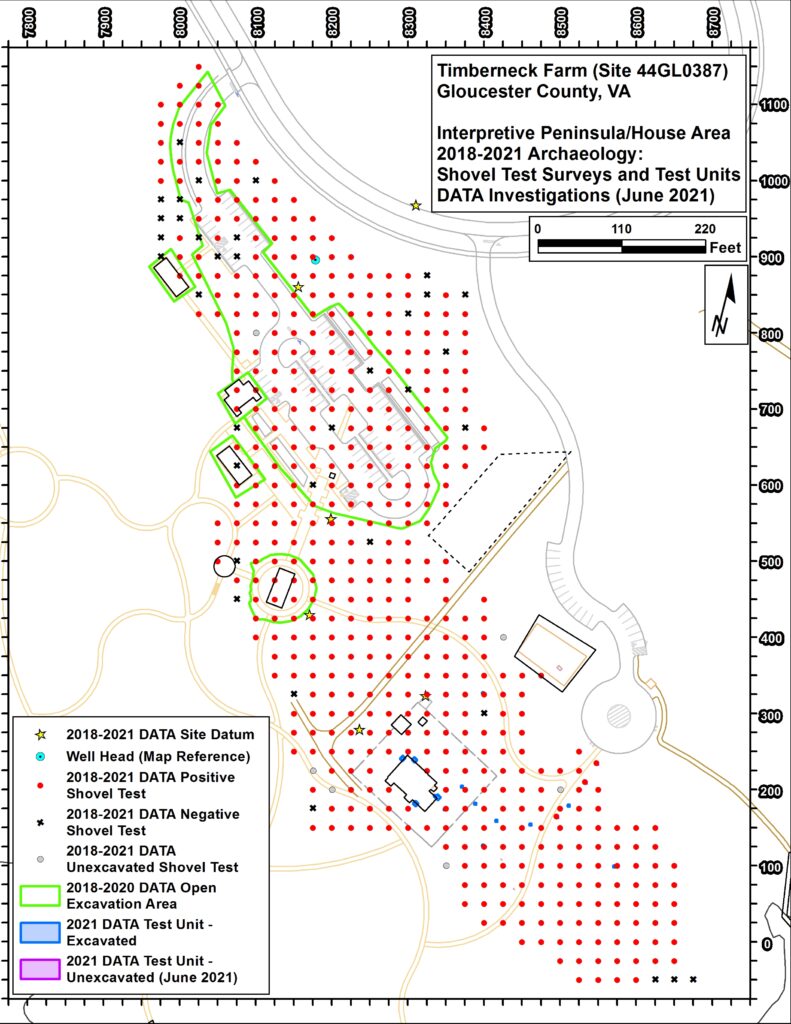
Map showing the locations of shovel test pits (STPs) around the Timberneck house, excavated every 25 feet across the property.
Many of the shovel tests identified unusual stratigraphy or deep deposits, so larger test units were excavated to better understand the cultural layers/features. In the test units, features such as a possible building sill, postholes from building supports or fencelines, and brick rubble were identified. Several units were also excavated to investigate the kitchen midden identified in the STP survey. These units produced high quantities of ceramics, bottle glass, animal bone, oyster and clam shell, and many personal objects such as a part of a glass car (either a figurine or possibly a candy jar). These midden excavations are ongoing as we prepare for the installation of new infrastructure around the house, including an access road and parking area.

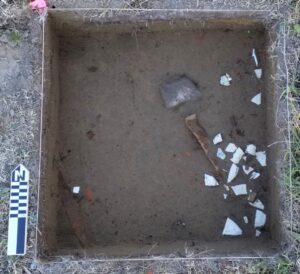
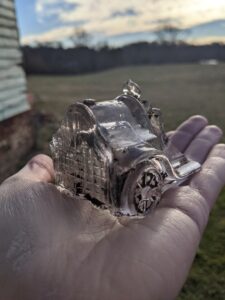
Finally, we excavated five test units around the foundations of the Timberneck house to better understand how the building itself evolved over time. One test unit found evidence of a possible porch on the north side of the house, further evidence of an original side passage layout that was popular in Federal-style houses of this period. Though the doorway was removed long ago, architectural and archaeological clues allow us to chart how the building changes. Another test unit investigated a closet addition on the east side of the building built in the second half of the 19th century. Surprisingly, substantial repair work to the foundation removed any evidence below grade of the original break in the foundation.
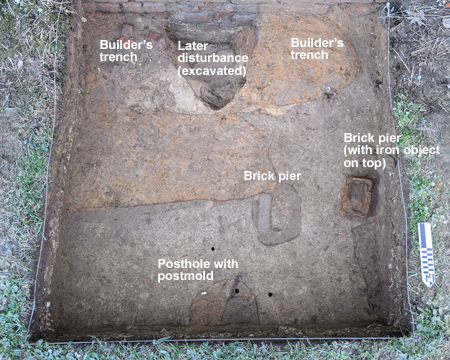
Test unit along the foundation, showing the two possible postholes or brick piers, potentially for a small porch on the north elevation.
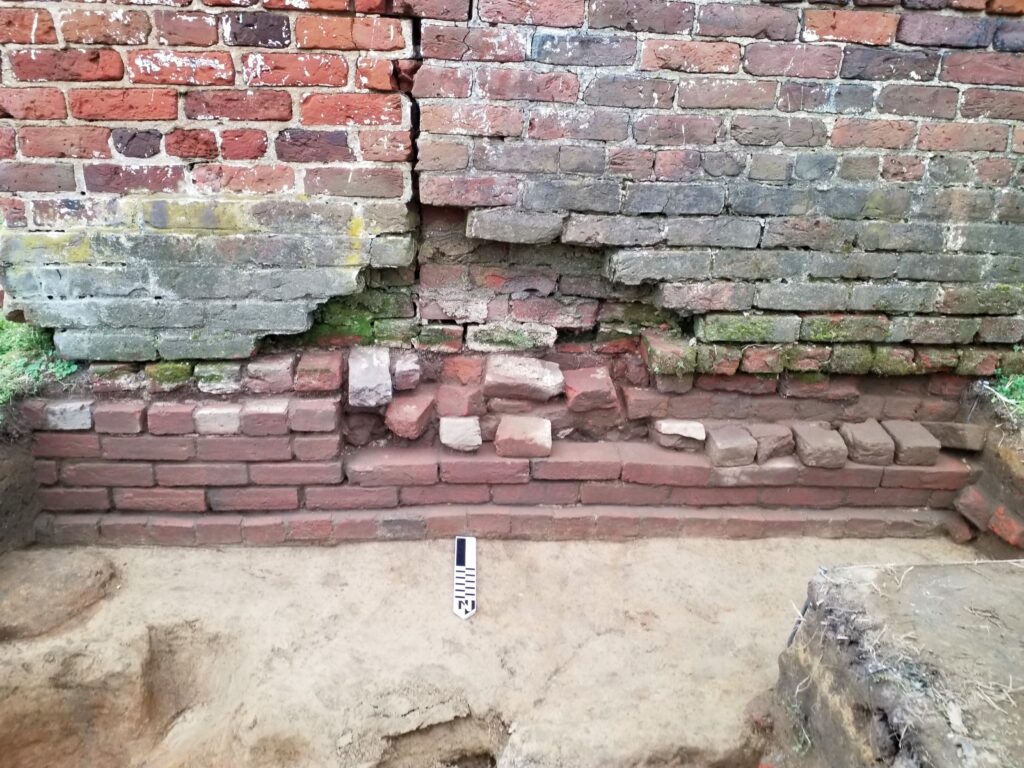
Image of the foundation with the closet addition; note the break in the foundation above ground surface, but the lack of break below ground surface.
Excavations help us understand how the landscape changed over the last few thousand years, which we can then interpret to park visitors and share with the general public. However, like most archaeology, these excavations raised more questions than they answered. If you’re interested in archaeology or historic preservation opportunities at Timberneck, contact us using the information at the bottom of this page or check us out on Facebook, Instagram, or Twitter for more updates!
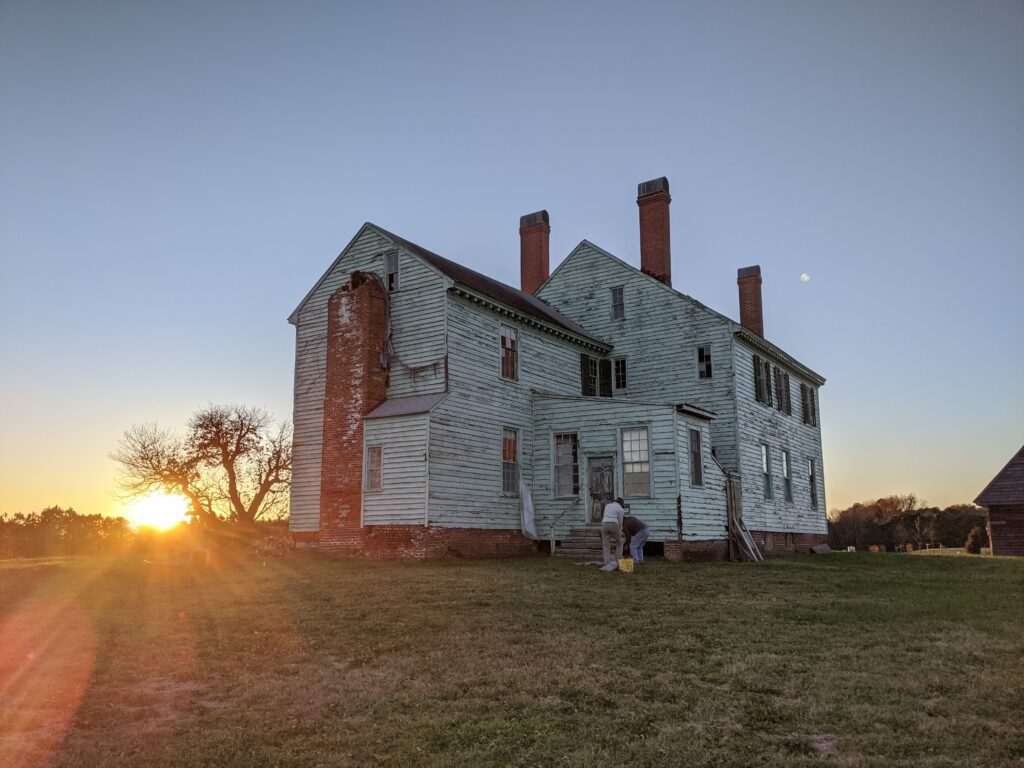
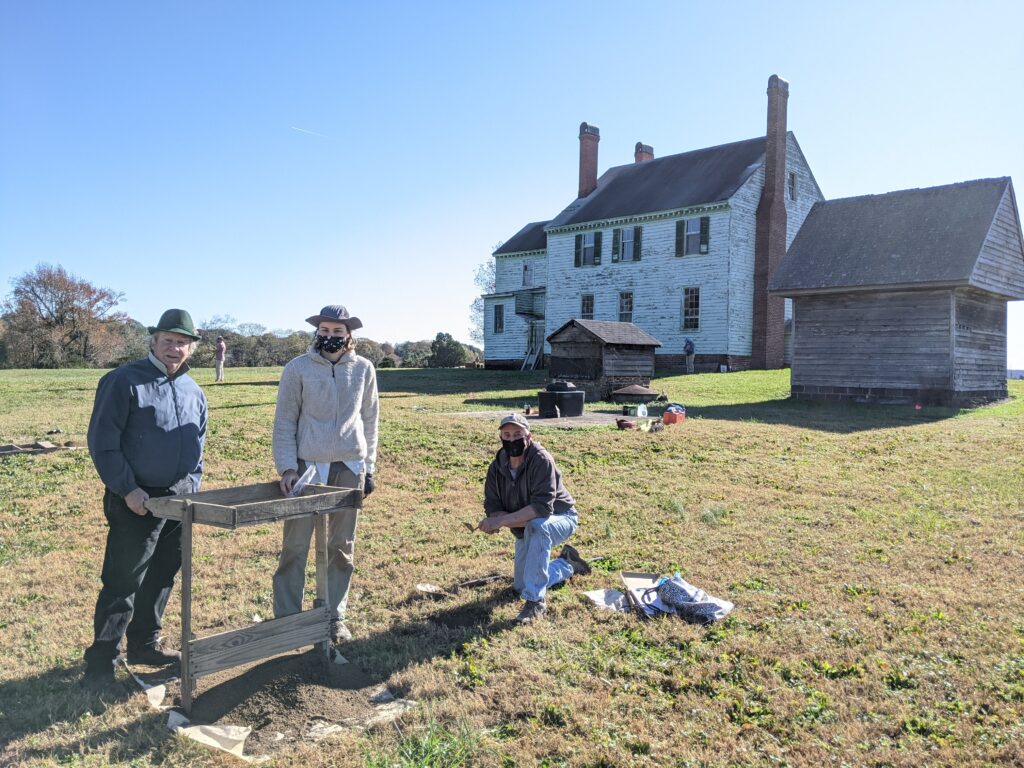

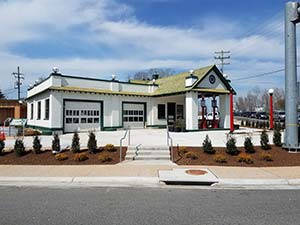
[…] Catlett family and their acquaintances, who shared stories about the property, and undertaking an archaeological survey and testing program around the house to help inform our research and restoration […]